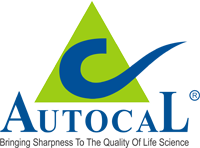Instrument Calibration: How Often Should You Do It
Instrument calibration is absolutely essential. There are no two ways about it. It can be defined as the process of comparing the measurements made by the instrument to be calibrated against a calibration standard of known accuracy. The device under test can also be calibrated by comparing with an instrument known for its accurate results.
When you don't calibrate your instruments, they will start producing substandard measurements which will eventually reflect on the final quality of the instruments. The equipment must be calibrated only at accredited laboratories so that you can be assured of high accuracy of measurement and minimum discrepancies.
Understanding When to Calibrate the Instruments
This is a common question that everyone has — how often should I calibrate my instruments? Well, there is no right or wrong answer for this. However, there is a list of variables which can help you with that question. The variables include the following:
Following manufacturers recommendation for the equipment
Almost every manufacturer recommends a calibration frequency for the instruments they make. They may also give stability specifications for different calibration periods. If you are confused about where to start, following the equipment manufacturer’s recommendation would be a good starting point.
Whenever you install a measurement instrument in any of your processes, you must understand the accuracy requirements for that specific installation location. Remember that not all the places in the factory where you would install similar transmitters would have the same accuracy need. The installed equipment’s specifications will affect the calibration period as compared to the need of the installed location. If you have installed an accurate transmitter in a location that does not have a high accuracy need, you can calibrate less often. There is no need to always follow the specifications of that installed equipment.
Focusing on critical locations
Make sure you calibrate the instruments installed in highly critical locations more often than those installed in less critical locations. The operating conditions and workload of a measurement device also play a significant factor in determining how often it should be recalibrated. If you use any instrument in very harsh operating conditions, it would be a good idea to calibrate it more often.
Stability history of the equipment
Take the historical data of an instrument’s stability into account when you make calibration schedules. If the instrument has a long history of being stable, then you can calibrate it less often. On the other hand, if the history shows that the instrument drifts quite often or fails frequently in recalibration, you must calibrate it more often. You can take the help of calibration software to track the history trend automatically. It will also help in making accurate analysis and it will be much faster as compared to trying to achieve it manually.
In certain cases, you will get regulatory requirements, standards or quality systems that clearly specify how often you must calibrate the instruments. It is essential that you adhere to them.
Calibrate before the equipment fails
When you stop calibrating frequently, the instrument will stop working accurately and will eventually fail. It is better to calibrate often as required, instead of letting the instrument fail altogether. This holds true for highly regulated industries like pharmaceuticals, food and beverage industry, or if the instrument is in any such critical location. In most industries, you cannot prove the quality of the final product just by measuring it once. Rather, several measurements have to be performed during the manufacturing process and these measurements must be maintained accurately with periodical calibrations.
Every manufacturing industry emphasizes on three things – Safety, quality, and consistency of their products. But all these three have one thing in common — you can be assured of reduced standards on these three aspects if you do not calibrate your instruments regularly. Make sure that regular calibration services rank high on your list. When you look after your instruments, you can be assured of the instruments delivering exactly what you want.
 Video About Autocal
Video About Autocal